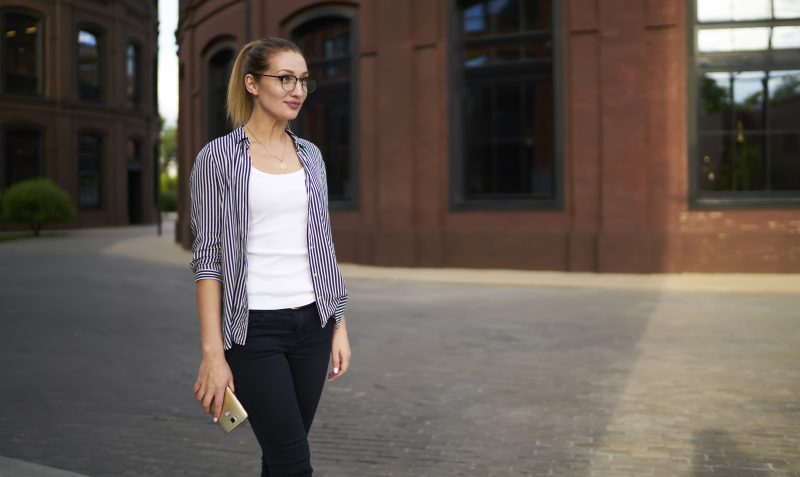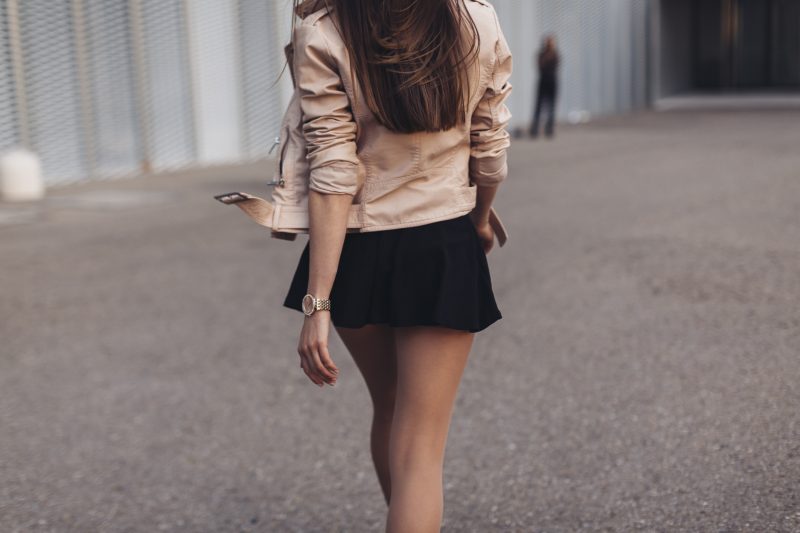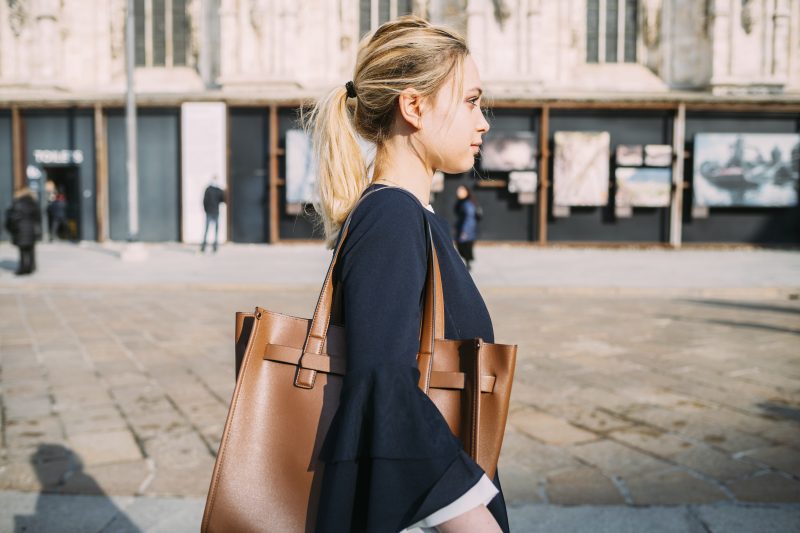The first time I properly understood the British approach to expensive dressing, I was at a fashion week dinner seated next to a woman who looked impeccable in what appeared to be a simple navy jumper and trousers. Nothing flashy, nothing logo-covered, just perfectly cut pieces in excellent fabrics. When another guest complimented her outfit and asked where it was from, she simply smiled and said, “Oh, this old thing? Just something I’ve had for ages.” Later, as we waited for our coats, I spotted the distinctive subtle seaming of her Loro Piana cashmere and realized her “simple jumper” probably cost more than my monthly rent.
That, in essence, is the most British approach to expensive dressing: the art of looking quietly, confidently well-dressed without obvious signals of wealth. It’s the opposite of logo-covered, look-at-me luxury—a more nuanced code that’s almost deliberately exclusionary in its subtlety. You either know the signals or you don’t. And if you don’t, well, that’s rather the point.
Of course, Britain has its share of flashy dressers too—the logo-loving, label-flaunting crowd certainly exists, particularly in certain London postcodes and Northern city centers on Saturday nights. But the most influential style tribes—the old-money aristocrats, the creative intelligentsia, the established fashion crowd—all share a distinct aversion to obvious displays of designer allegiance. Their approach is more about quality, fit, and insider signifiers that speak volumes to those who can read the code while remaining pleasantly anonymous to everyone else.
I’ve spent years observing these subtle signals both as a fashion editor and as someone who grew up decidedly outside these circles, giving me both professional insight and the perspective of someone who’s had to learn these rules rather than absorb them osmotically from birth. So consider this your translation guide to the unspoken language of expensive British style—how to look like money without wearing the price tag on your sleeve.
The most fundamental principle is fit. Nothing signals quality like clothes that appear to have been made specifically for your body, even if they weren’t.
This doesn’t necessarily mean skin-tight or aggressively tailored—in fact, the current preference among the genuinely wealthy leans toward a more relaxed, unstructured fit. But it’s a deliberate, designed relaxation rather than accidental bagginess. The shoulders sit exactly where they should. The trousers break at precisely the right point. The sleeves end at the perfect spot on the wrist.
I had this lesson hammered home when I interviewed a prominent British fashion designer who turned up in what appeared to be a simple white shirt and black trousers. It wasn’t until I looked closely that I realized every element had been meticulously considered—the slightly unusual collar shape, the perfectly proportioned cuffs, the way the trousers draped impeccably despite appearing relaxed. “Good clothes shouldn’t announce themselves,” she told me. “They should just make you look like the best version of yourself.”

This approach explains why alterations are the secret weapon of the genuinely stylish. Even moderately priced clothes can look expensive when adjusted to fit perfectly. I have a friend who buys relatively affordable high street trousers but has them tailored to break perfectly over her shoes—a small adjustment that transforms them completely. Another always has shirt sleeves adjusted to hit exactly at her wrist bone rather than accepting the generic length off the rack. These tweaks cost a fraction of buying designer but elevate everyday pieces immeasurably.
After fit comes fabric—perhaps the most reliable indicator of quality and expense. The British approach to luxury textiles is tactile rather than visual. Instead of shiny, obviously expensive-looking materials, the preference is for substantial, natural fabrics with character and depth. Think heavy silk that doesn’t catch the light too much, dense cotton with a slight texture, or wool with a perfect drape. The giveaway is often how these fabrics move—cheaper versions appear stiff or clingy, while quality materials move naturally with the body.
I once watched a fashion director run her hand down a rail of seemingly identical white shirts, immediately pulling out the most expensive one based solely on touch. When I asked how she knew, she explained it wasn’t just about softness (cheaper fabrics can be artificially softened) but about the weight, the way it hung from her hand, and the subtle texture visible only up close. These are distinctions you develop an eye (and hand) for over time, but they make all the difference in how clothes look on the body.
Color is another key signifier in British expensive dressing, though not in the way you might expect. Rather than bright, attention-grabbing hues, the palette of genuine quality leans toward what my mother would call “dirty colors”—slightly muddied, complex shades that appear to have depth and subtlety. Navy instead of bright blue. Burgundy rather than red. Olive instead of bright green. These colors tend to look more expensive because they’re harder to render accurately in cheaper fabrics and hold their appearance better over time.
One of the most stylish women I know—the creative director of a British heritage brand—wears almost exclusively what she calls “non-colors”: greige, taupe, charcoal, deep navy, and bitter chocolate. At first glance, her wardrobe might seem plain, even boring. But the effect when she wears these carefully calibrated neutrals is one of quiet confidence and unmistakable quality. The colors never compete with each other, creating instead a seamless visual experience where you notice the person first, not their clothes.
This brings us to perhaps the most British quality signifier of all: understatement. The genuine elite have a distinct aversion to anything that appears to be trying too hard. This translates to a preference for clean lines, minimal embellishment, and a general air of unfussy elegance. It’s the opposite of the “Conspicuous consumption” approach—call it “inconspicuous consumption” instead, where the goal is to be recognized only by others who share the same aesthetic values.
I witnessed a perfect example of this at a gallery opening where two women were wearing black dresses that appeared similar at first glance. One was covered in designer labels, with signature hardware and recognizable details. The other was completely unbranded but had a perfect cut, exceptional fabric, and subtle details visible only up close—handstitched seams, covered buttons in the same material as the dress, a lining that matched the outer fabric perfectly. To those who understood the code, the second dress quietly announced itself as significantly more expensive and exclusive.
Accessories provide perhaps the clearest illustration of this British approach to stealth wealth. Instead of bags covered in logos or recognizable hardware, the preference is for quieter pieces distinguished by exceptional materials and craftsmanship. Think of the Launer handbags favored by the Queen—immediately recognizable to those in the know but completely anonymous to most people. Or the Swaine Adeney Brigg umbrellas carried by certain men in the City—horrifically expensive but with nothing to announce their price except perfect construction and materials.
I’ve noticed that genuinely wealthy British women often carry bags with the brand name positioned discreetly on the inside, not emblazoned across the exterior. The exceptions are usually heritage brands with a certain cultural cachet—a vintage Hermès Kelly or Constance, for instance, telegraphs taste and longevity rather than fleeting fashion, particularly if it shows signs of having been used and loved for years rather than purchased yesterday.
Jewelry follows similar rules—the preference is for real materials (gold, silver, genuine stones) in classic designs rather than fashion pieces, regardless of designer name. Quality is measured in subtlety and craftsmanship rather than size or flash. I’ve seen women wearing what appeared to be simple gold bands that I later discovered were handcrafted by niche jewelers with waiting lists years long. The compliment these pieces attract isn’t “Nice necklace!” but rather a knowing nod from someone who recognizes its provenance.
The concept of patina plays an important role in this aesthetic too. Unlike some luxury approaches where newness is prized, the British version often values pieces that have gained character through age and use. A well-worn Barbour jacket. Leather shoes with signs of regular polishing and care. A cashmere jumper that’s been carefully mended. These items suggest longevity and quality over fleeting trends—the antithesis of disposable fashion.
I have a friend whose father comes from genuine British old money (the kind where the family has had the same address for 300 years), and she once showed me his decades-old Edward Green shoes, still in perfect condition but with the distinctive patina that only comes from years of wear and proper care. “He says new shoes are a bit vulgar,” she explained. “They should look like part of you, not something you bought last week.” This perspective—that the best things improve with age rather than deteriorate—is deeply embedded in traditional British style.
Grooming follows similar principles—expensive but not obviously so. Hair that looks healthy and well-cut but not obviously “done.” Skin that appears naturally good rather than the result of obvious interventions. Nails that are immaculately clean and shaped but not necessarily decorated. The overall effect should be of effortless good health rather than visible maintenance, regardless of how much actual effort goes into creating that illusion.
I once interviewed a prominent British beauty editor who explained that the most expensive-looking approach to beauty was “looking like yourself, just on an exceptionally good day.” This means investment in quality haircuts that grow out well rather than styles requiring constant maintenance, skincare that improves texture and health rather than masking problems, and makeup applied with such skill it simply enhances natural features without announcing its presence.
There are certain brands that understand this British approach perfectly, creating pieces that signal quality to those who recognize the markers while remaining relatively anonymous to everyone else. Margaret Howell, Sunspel, Private White V.C., Connolly, and Johnstons of Elgin all epitomize this aesthetic—exceptional quality materials, perfect construction, and designs that prioritize longevity over fashion moments. Their pieces rarely go on sale (a telling detail in itself) and tend to look as relevant ten years after purchase as they did on day one.
I’ve noticed that many genuinely stylish British people develop relationships with specific pieces and brands rather than constantly chasing newness. They might have been buying the same style of shirt from the same maker for twenty years, having it replaced only when absolutely necessary. There’s a certain confidence in this approach—knowing what works and sticking with it rather than being buffeted by changing trends.
One of the most telling markers of expensive British style is how clothes are cared for. Quality pieces are stored properly, maintained regularly, and repaired rather than replaced at the first sign of wear. I have a colleague who has her cashmere jumpers professionally cleaned and stored each spring, her shoes resoled by a specific cobbler in Mayfair, and her coats brushed and hung on proper wooden hangers between wearings. The result is a wardrobe of pieces that look perfect despite some having been in rotation for over a decade.
This approach extends to how clothes are worn too. There’s a certain nonchalance to truly expensive dressing—clothes should appear comfortable and lived-in rather than precious or restrictive. I once watched a woman at a very smart restaurant casually roll up the sleeves of what I later discovered was a £900 silk shirt. The confidence to treat expensive pieces casually rather than preciously is, paradoxically, one of the clearest indicators of genuine wealth.
For those looking to adopt this aesthetic without the accompanying bank balance, there are strategies that can help. Prioritizing one exceptional piece and building around it with simpler items often works better than purchasing multiple mediocre pieces. A perfect coat, for instance, can elevate everything worn underneath it.
Focusing on secondary luxury markets can provide access to quality otherwise out of reach. I have a friend who exclusively buys her cashmere secondhand on eBay, searching for specific high-end brands and having them professionally cleaned. She’s built a collection of exceptional pieces for a fraction of their original cost.
Understanding which elements most visibly signal quality allows for strategic investment. Buttons, for instance, can transform the appearance of a garment—replacing the plastic buttons on a high street coat with horn or mother-of-pearl ones immediately elevates its appearance. Similarly, shoes tend to be one of the most obvious quality indicators—investing in one perfect pair rather than five mediocre ones often makes more sense from a style perspective.
The most sophisticated approach combines high and low seamlessly, with quality pieces in the categories that matter most and more affordable options where the differences are less visible. This might mean exceptional shoes and coat paired with well-chosen high street basics, or investing in perfect trousers while saving on t-shirts and knitwear.
What’s particularly interesting about this British approach to expensive dressing is how it transcends traditional class boundaries while simultaneously reinforcing them in new ways.
The old signals of wealth—certain accents, educational backgrounds, family connections—are increasingly accompanied by these more subtle aesthetic codes that aren’t necessarily tied to birth but require cultural fluency to interpret correctly.
I’ve watched people from non-traditional backgrounds master these signals perfectly, using them to navigate spaces previously closed to them. At the same time, I’ve seen people with genuine wealth and privilege completely miss the mark by prioritizing obvious designer recognition over true quality. The codes keep shifting, but the fundamental principles—quality, understatement, confidence—remain remarkably consistent.
Perhaps the most British aspect of this approach is the element of deliberate exclusion it contains—the sense that if you have to ask, you’ll never know. There’s something slightly subversive about creating luxury signals that remain invisible to most people, like a secret language spoken in plain sight. It’s simultaneously democratic (anyone can potentially learn the code) and deeply exclusionary (most people will never even realize there’s a code to learn).
The ultimate irony is that true mastery of this aesthetic often comes full circle, with the most sophisticated practitioners occasionally breaking their own rules through confident juxtaposition—pairing exceptional quality basics with one unexpected, even flamboyant piece, or deliberately subverting traditional codes with knowing playfulness. But this only works when the foundation of understanding is already firmly in place—you have to know the rules perfectly before you can break them effectively.
So next time you see someone who looks expensively dressed without obvious signifiers, pay attention to the details—the perfect fit of their trousers, the weight of the fabric in their apparently simple shirt, the quality of their seemingly unremarkable shoes. These are the true markers of expensive British style—hidden in plain sight, obvious only to those who know exactly what they’re looking for.


